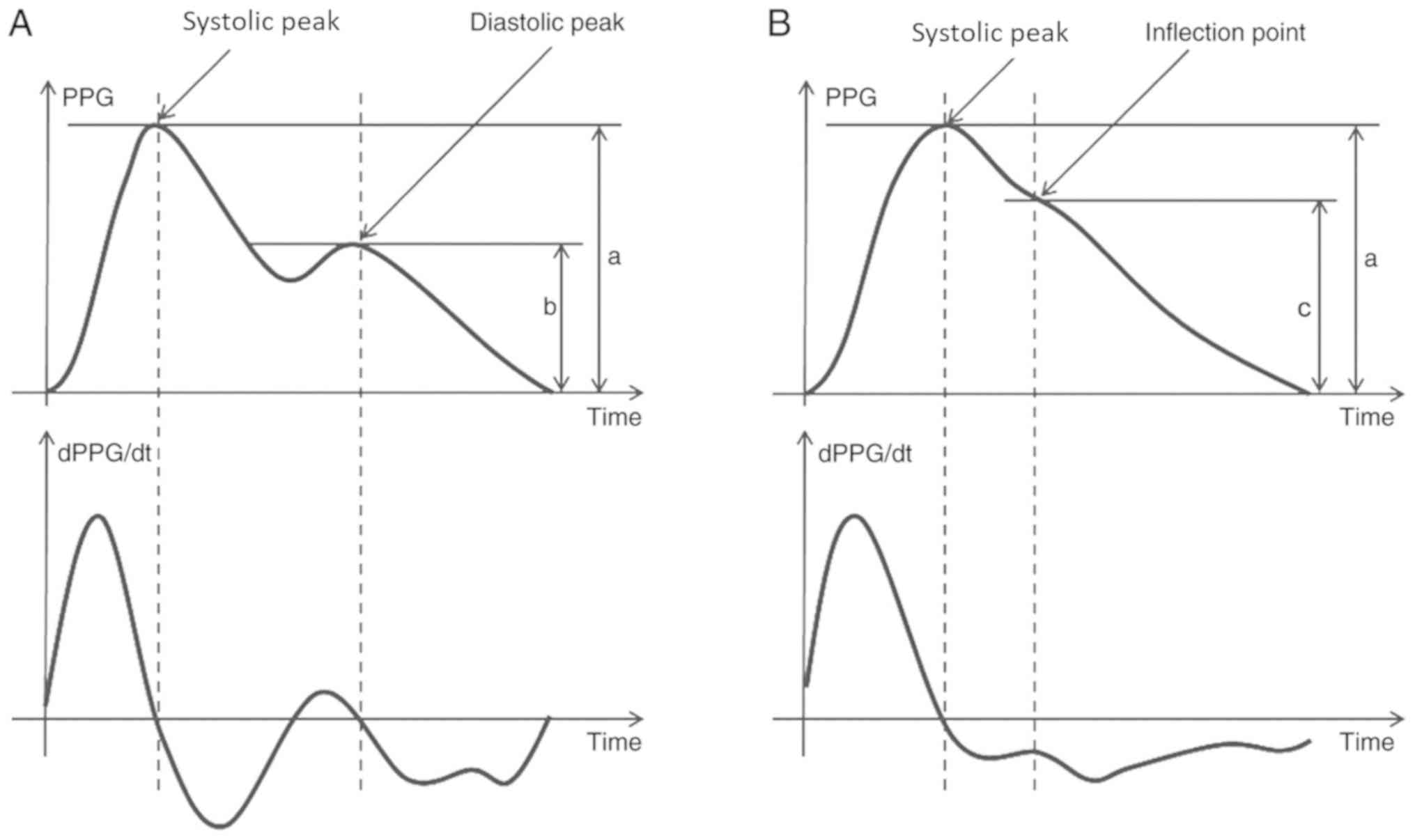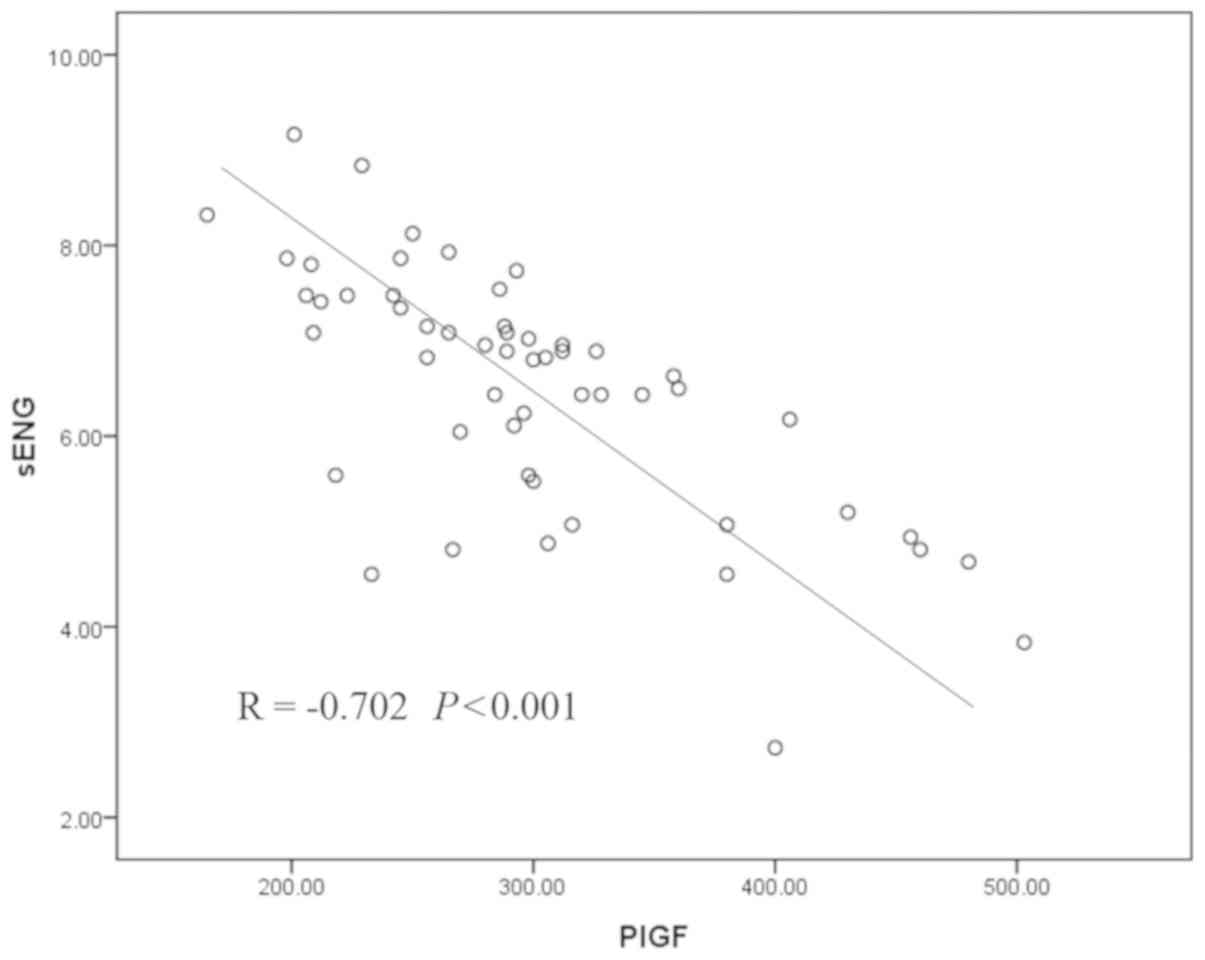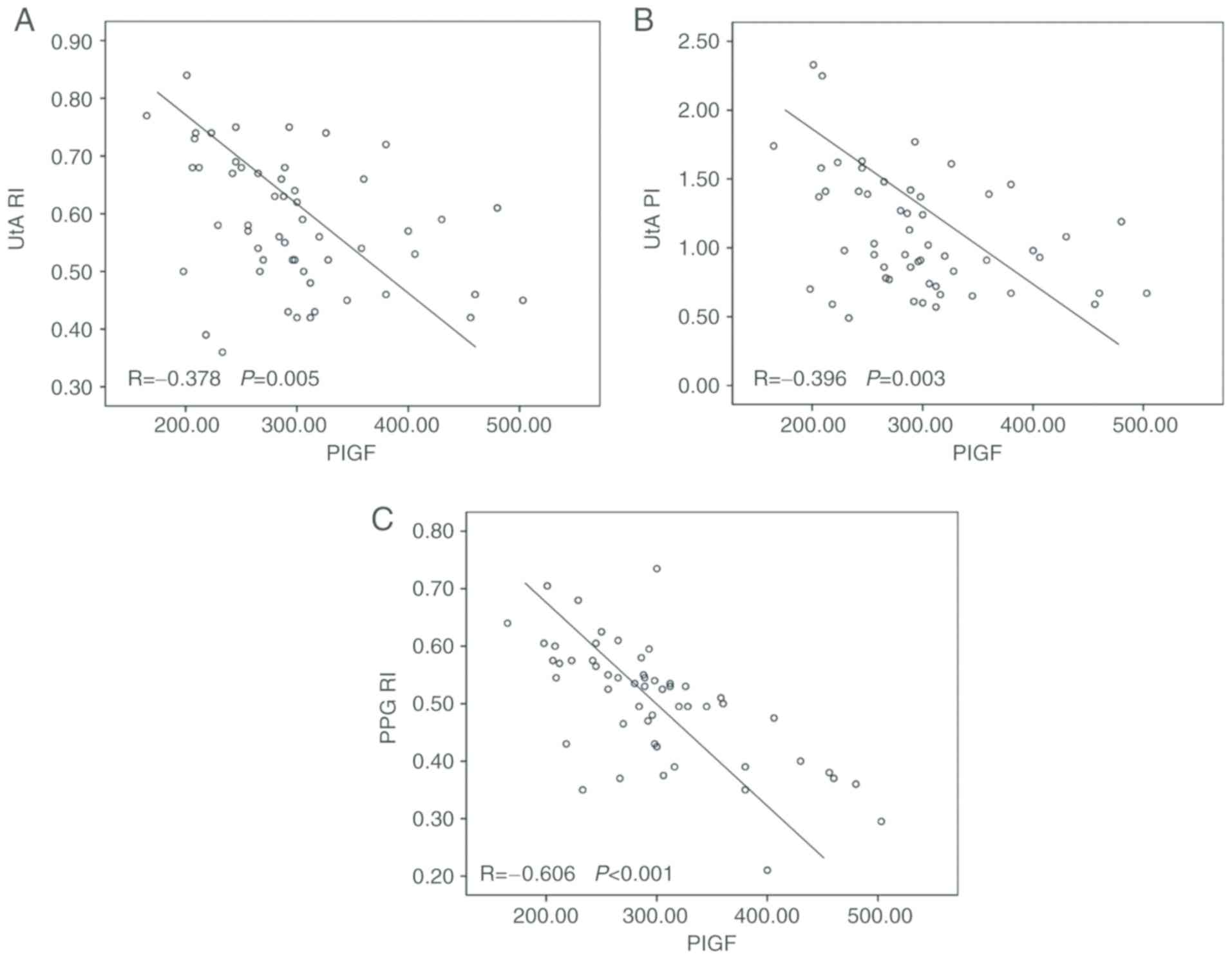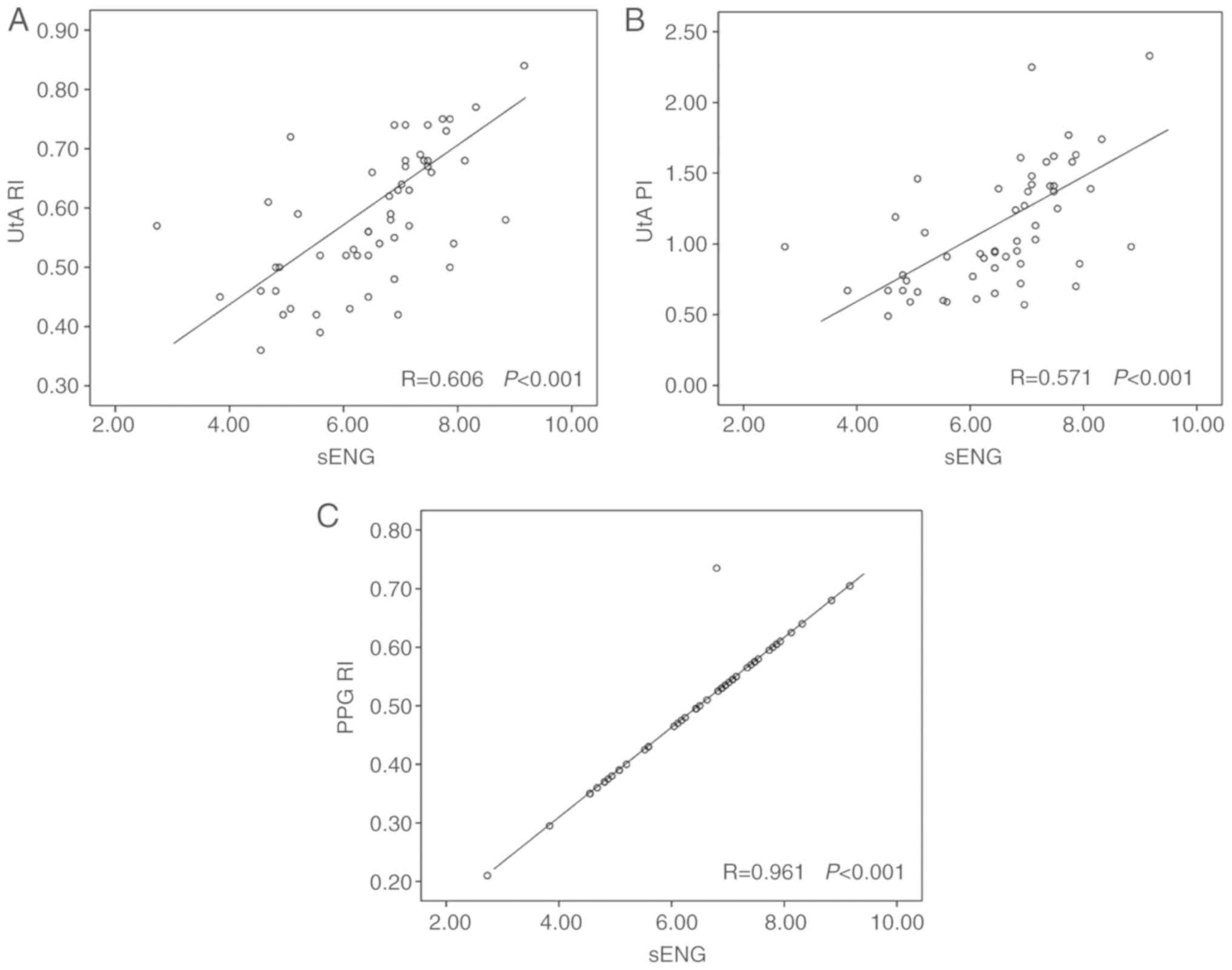|
1
|
Kintiraki E, Papakatsika S, Kotronis G,
Goulis DG and Kotsis V: Pregnancy-induced hypertension. Hormones
(Athens). 14:211–223. 2015. View Article : Google Scholar : PubMed/NCBI
|
|
2
|
Liu FM, Zhao M, Wang M, Yang HL and Li L:
Effect of regular oral intake of aspirin during pregnancy on
pregnancy outcome of high-risk pregnancy-induced hypertension
syndrome patients. Eur Rev Med Pharmacol Sci. 20:5013–5016.
2016.PubMed/NCBI
|
|
3
|
Draganovic D, Lucic N and Jojic D:
Oxidative stress marker and pregnancy induced hypertension. Med
Arch. 70:437–440. 2016. View Article : Google Scholar : PubMed/NCBI
|
|
4
|
Damodaran D: Effect of progressive muscle
relaxation technique in terms oi anxiety and physiological
parameters of antenatal mothers with pregnancy-induced
hypertension. Nurs J India. 106:254–257. 2015.PubMed/NCBI
|
|
5
|
Leffert LR, Clancy CR, Bateman BT, Bryant
AS and Kuklina EV: Hypertensive disorders and pregnancy-related
stroke: Frequency, trends, risk factors, and outcomes. Obstet
Gynecol. 125:124–131. 2015. View Article : Google Scholar : PubMed/NCBI
|
|
6
|
Naderi S, Tsai SA and Khandelwal A:
Hypertensive disorders of pregnancy. Curr Atheroscler Rep.
19:152017. View Article : Google Scholar : PubMed/NCBI
|
|
7
|
Davenport MH, Ruchat SM, Poitras VJ,
Jaramillo Garcia A, Gray CE, Barrowman N, Skow RJ, Meah VL, Riske
L, Sobierajski F, et al: Prenatal exercise for the prevention of
gestational diabetes mellitus and hypertensive disorders of
pregnancy: A systematic review and meta-analysis. Br J Sports Med.
52:1367–1375. 2018. View Article : Google Scholar : PubMed/NCBI
|
|
8
|
Sultana Z, Maiti K, Dedman L and Smith R:
Is there a role for placental senescence in the genesis of
obstetric complications and fetal growth restriction? Am J Obstet
Gynecol. 218:S762–S773. 2018. View Article : Google Scholar : PubMed/NCBI
|
|
9
|
Phipps E, Prasanna D, Brima W and Jim B:
Preeclampsia: Updates in pathogenesis, definitions, and guidelines.
Clin J Am Soc Nephrol. 11:1102–1113. 2016. View Article : Google Scholar : PubMed/NCBI
|
|
10
|
Jim B and Karumanchi SA: Preeclampsia:
Pathogenesis, prevention, and long-term complications. Semin
Nephrol. 37:386–397. 2017. View Article : Google Scholar : PubMed/NCBI
|
|
11
|
Guedes-Martins L: Superimposed
preeclampsia. Adv Exp Med Biol. 956:409–417. 2017. View Article : Google Scholar : PubMed/NCBI
|
|
12
|
Liu Z, Zhou Y, Yi R, He J, Yang Y, Luo L,
Dai Y and Luo X: Quantitative research into the deconditioning of
hemodynamic to disorder of consciousness carried out using
transcranial Doppler ultrasonography and photoplethysmography
obtained via finger-transmissive absorption. Neurol Sci.
37:547–555. 2016. View Article : Google Scholar : PubMed/NCBI
|
|
13
|
Han N, Luo X and Su F: A quantitative
investigation of hemodynamic adaptation to pregnancy using uterine
artery Doppler ultrasonography and finger photoplethysmography.
Hypertens Pregnancy. 33:498–507. 2014. View Article : Google Scholar : PubMed/NCBI
|
|
14
|
Di Santo P, Harnett DT, Simard T, Ramirez
FD, Pourdjabbar A, Yousef A, Moreland R, Bernick J, Wells G, Dick
A, et al: Photoplethysmography using a smartphone application for
assessment of ulnar artery patency: A randomized clinical trial.
CMAJ. 190:E380–E388. 2018. View Article : Google Scholar : PubMed/NCBI
|
|
15
|
Ling P, Quan G, Siyuan Y, Bo G and Wei W:
Can the descending aortic stroke volume be estimated by
transesophageal descending aortic photoplethysmography? J Anesth.
31:337–344. 2017. View Article : Google Scholar : PubMed/NCBI
|
|
16
|
Veerbeek JH, Hermes W, Breimer AY, van
Rijn BB, Koenen SV, Mol BW, Franx A, de Groot CJ and Koster MP:
Cardiovascular disease risk factors after early-onset preeclampsia,
late-onset preeclampsia, and pregnancy-induced hypertension.
Hypertension. 65:600–606. 2015. View Article : Google Scholar : PubMed/NCBI
|
|
17
|
Yang P, Dai A, Alexenko AP, Liu Y,
Stephens AJ, Schulz LC, Schust DJ, Roberts RM and Ezashi T:
Abnormal oxidative stress responses in fibroblasts from
preeclampsia infants. PLoS One. 9:e1031102014. View Article : Google Scholar : PubMed/NCBI
|
|
18
|
Tannetta D, Masliukaite I, Vatish M,
Redman C and Sargent I: Update of syncytiotrophoblast derived
extracellular vesicles in normal pregnancy and preeclampsia. J
Reprod Immunol. 119:98–106. 2017. View Article : Google Scholar : PubMed/NCBI
|
|
19
|
Vieillefosse S, Guibourdenche J, Atallah
A, Haddad B, Fournier T, Tsatsaris V and Lecarpentier E: Predictive
and prognostic factors of preeclampsia: Interest of PlGF and
sFLT-1. J Gynecol Obstet Biol Reprod (Paris). 45:999–1008. 2016.
View Article : Google Scholar : PubMed/NCBI
|
|
20
|
Erez O, Romero R, Maymon E, Chaemsaithong
P, Done B, Pacora P, Panaitescu B, Chaiworapongsa T, Hassan SS and
Tarca AL: The prediction of late-onset preeclampsia: Results from a
longitudinal proteomics study. PLoS One. 12:e01814682017.
View Article : Google Scholar : PubMed/NCBI
|
|
21
|
Enninga EA, Nevala WK, Creedon DJ,
Markovic SN and Holtan SG: Fetal sex-based differences in maternal
hormones, angiogenic factors, and immune mediators during pregnancy
and the postpartum period. Am J Reprod Immunol. 73:251–262. 2015.
View Article : Google Scholar : PubMed/NCBI
|
|
22
|
Chen H, Zhou X, Han TL, Baker PN, Qi H and
Zhang H: Decreased IL-33 production contributes to trophoblast cell
dysfunction in pregnancies with preeclampsia. Mediators Inflamm.
2018:97872392018. View Article : Google Scholar : PubMed/NCBI
|
|
23
|
Romero R, Chaemsaithong P, Tarca AL,
Korzeniewski SJ, Maymon E, Pacora P, Panaitescu B, Chaiyasit N,
Dong Z, Erez O, et al: Maternal plasma-soluble ST2 concentrations
are elevated prior to the development of early and late onset
preeclampsia-a longitudinal study. J Matern Fetal Neonatal Med.
31:418–432. 2018. View Article : Google Scholar : PubMed/NCBI
|
|
24
|
Stampalija T, Chaiworapongsa T, Romero R,
Chaemsaithong P, Korzeniewski SJ, Schwartz AG, Ferrazzi EM, Dong Z
and Hassan SS: Maternal plasma concentrations of sST2 and
angiogenic/anti-angiogenic factors in preeclampsia. J Matern Fetal
Neonatal Med. 26:1359–1370. 2013. View Article : Google Scholar : PubMed/NCBI
|
|
25
|
Granne I, Southcombe JH, Snider JV,
Tannetta DS, Child T, Redman CW and Sargent IL: ST2 and IL-33 in
pregnancy and pre-eclampsia. PLoS One. 6:e244632011. View Article : Google Scholar : PubMed/NCBI
|
|
26
|
Mishra RC, Rahman MM, Davis MJ, Wulff H,
Hill MA and Braun AP: Alpha1-adrenergic stimulation
selectively enhances endothelium-mediated vasodilation in rat
cremaster arteries. Physiol Rep. 6:e137032018. View Article : Google Scholar : PubMed/NCBI
|
|
27
|
Possomato-Vieira JS and Khalil RA:
Mechanisms of endothelial dysfunction in hypertensive pregnancy and
preeclampsia. Adv Pharmacol. 77:361–431. 2016. View Article : Google Scholar : PubMed/NCBI
|
|
28
|
Couceiro R, Carvalho P, Paiva RP,
Henriques J, Quintal I, Antunes M, Muehlsteff J, Eickholt C,
Brinkmeyer C, Kelm M and Meyer C: Assessment of cardiovascular
function from multi-Gaussian fitting of a finger
photoplethysmogram. Physiol Meas. 36:1801–1825. 2015. View Article : Google Scholar : PubMed/NCBI
|
|
29
|
Khaddaj Mallat R, Mathew John C, Kendrick
DJ and Braun AP: The vascular endothelium: A regulator of arterial
tone and interface for the immune system. Crit Rev Clin Lab Sci.
54:458–470. 2017. View Article : Google Scholar : PubMed/NCBI
|
|
30
|
Gray SP and Jandeleit-Dahm KA: The role of
NADPH oxidase in vascular disease - hypertension, atherosclerosis
& stroke. Curr Pharm Des. 21:5933–5944. 2015. View Article : Google Scholar : PubMed/NCBI
|
|
31
|
Madonna R and De Caterina R: Aquaporin-1
and sodium-hydrogen exchangers as pharmacological targets in
diabetic atherosclerosis. Curr Drug Targets. 16:361–365. 2015.
View Article : Google Scholar : PubMed/NCBI
|
|
32
|
Redman CW, Sacks GP and Sargent IL:
Preeclampsia: An excessive maternal inflammatory response to
pregnancy. Am J Obstet Gynecol. 180:499–506. 1999. View Article : Google Scholar : PubMed/NCBI
|
|
33
|
Kudaravalli J: Improvement in endothelial
dysfunction in patients with systemic lupus erythematosus with
N-acetylcysteine and atorvastatin. Indian J Pharmacol. 43:311–315.
2011. View Article : Google Scholar : PubMed/NCBI
|
|
34
|
Rosato E, Barbano B, Gigante A, Aversa A,
Cianci R, Molinaro I, Quarta S, Pisarri S, Afeltra A and Salsano F:
Erectile dysfunction, endothelium dysfunction, and microvascular
damage in patients with systemic sclerosis. J Sex Med.
10:1380–1388. 2013. View Article : Google Scholar : PubMed/NCBI
|


















